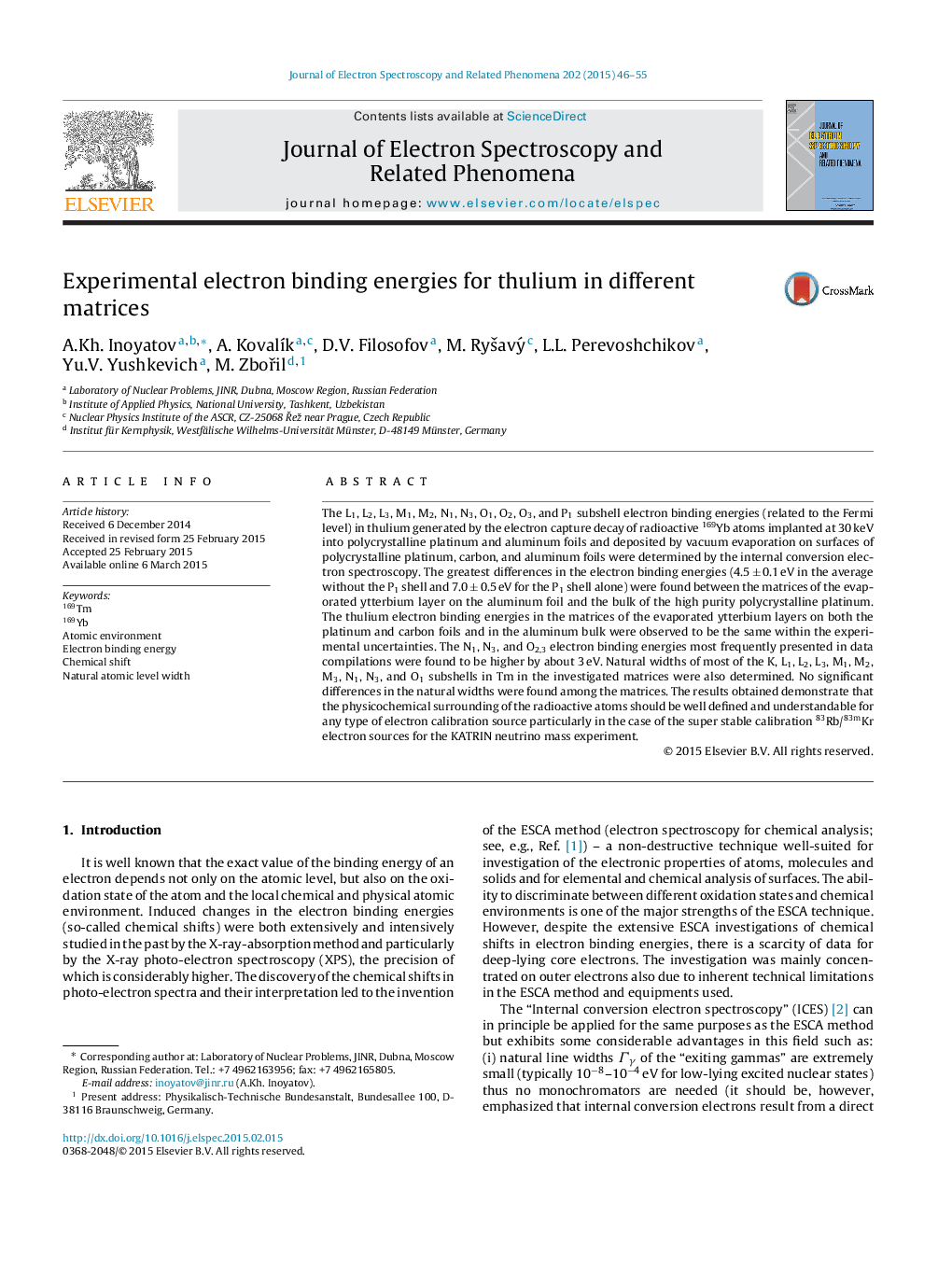| Article ID | Journal | Published Year | Pages | File Type |
|---|---|---|---|---|
| 5395696 | Journal of Electron Spectroscopy and Related Phenomena | 2015 | 10 Pages |
Abstract
The L1, L2, L3, M1, M2, N1, N3, O1, O2, O3, and P1 subshell electron binding energies (related to the Fermi level) in thulium generated by the electron capture decay of radioactive 169Yb atoms implanted at 30 keV into polycrystalline platinum and aluminum foils and deposited by vacuum evaporation on surfaces of polycrystalline platinum, carbon, and aluminum foils were determined by the internal conversion electron spectroscopy. The greatest differences in the electron binding energies (4.5 ± 0.1 eV in the average without the P1 shell and 7.0 ± 0.5 eV for the P1 shell alone) were found between the matrices of the evaporated ytterbium layer on the aluminum foil and the bulk of the high purity polycrystalline platinum. The thulium electron binding energies in the matrices of the evaporated ytterbium layers on both the platinum and carbon foils and in the aluminum bulk were observed to be the same within the experimental uncertainties. The N1, N3, and O2,3 electron binding energies most frequently presented in data compilations were found to be higher by about 3 eV. Natural widths of most of the K, L1, L2, L3, M1, M2, M3, N1, N3, and O1 subshells in Tm in the investigated matrices were also determined. No significant differences in the natural widths were found among the matrices. The results obtained demonstrate that the physicochemical surrounding of the radioactive atoms should be well defined and understandable for any type of electron calibration source particularly in the case of the super stable calibration 83Rb/83mKr electron sources for the KATRIN neutrino mass experiment.
Related Topics
Physical Sciences and Engineering
Chemistry
Physical and Theoretical Chemistry
Authors
Ð.Kh. Inoyatov, A. KovalÃk, D.V. Filosofov, M. RyÅ¡avý, L.L. Perevoshchikov, Yu.V. Yushkevich, M. ZboÅil,
